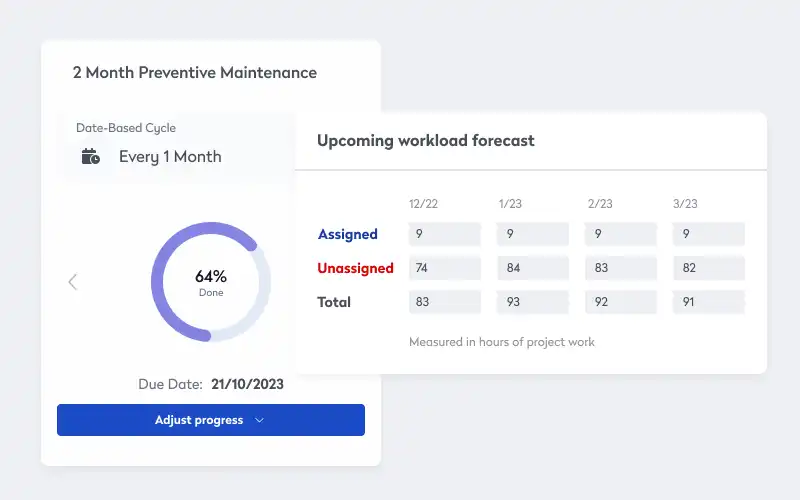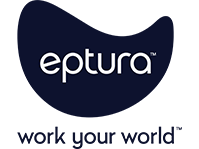
Managing government healthcare facilities presents persistent challenges in budget, technology, and compliance. Limited funding restricts investments in modern infrastructure, forcing short-term fixes over long-term improvements. Outdated systems and fragmented maintenance data contribute to inefficiencies across public healthcare, while regulatory compliance adds additional complexity, with evolving standards and under-resourced departments making it difficult to meet safety and reporting requirements. In fact, a 2025 report by the National Audit Office (UK) found that aging infrastructure and poor data integration are major factors undermining performance in public healthcare settings.
By implementing a modern unified facility management solution, healthcare leaders can optimize operations, cut costs, and make data-driven decisions that enhance patient care by connecting workplaces, people, and assets through a single, centralized platform.
What are common challenges for government-run healthcare facilities?
Managing government healthcare facilities effectively is a complex process that involves many ongoing, interconnected challenges, including:
- Budget constraints and funding issues: Healthcare facilities often operate on tight budgets, which can limit their ability to invest in new technologies, equipment, and staff. In the UK, for example, healthcare spending remains high relative to GDP, but systemic challenges persist. Despite increased funding allocations, including a 10% rise in the 2025–26 budget, many facilities continue to struggle with outdated infrastructure.
- Staffing shortages and turnover: Managing staffing levels and ensuring that facilities have the necessary personnel to provide high-quality care is a constant challenge because of a worldwide shortage of doctors, nurses, and other support staff. In the United States, hospital employment has decreased by nearly 94,000 employees, with turnover rates in critical departments — such as emergency and intensive care — rising from 18% to 30% in 2025.
- Technological integration and upkeep: In 2025, healthcare providers across North America identified technology infrastructure as one of their top long-term concerns, with 20% of surveyed executives ranking it among their top three challenges. But while health services and technology (HST) segments are expected to grow at 8% CAGR through 2028, providers face challenges integrating these tools due to limited budgets, workforce readiness, and legacy systems.
- Regulatory compliance and standards: In 2025, healthcare compliance departments face growing responsibilities without proportional increases in resources. According to the 2025 Healthcare Compliance Benchmark Report, one-third of compliance offices operate with only one full-time or part-time employee, and two-thirds expect no change in staffing or budget despite expanding regulatory requirements.
Many of these are the same challenges faced by private and for-profit facilities. But government healthcare facilities often have a tougher time with them. They must navigate complex regulatory requirements and ensure that all operations meet stringent safety and quality standards but securing funding and obtaining approvals for expansions or new equipment can be a lengthy and bureaucratic process.
A modern unified facility management platform helps address these operational challenges by streamlining maintenance, controlling costs, and automating daily processes, so staff at government healthcare facilities can meet regulatory requirements while also delivering high-quality patient care, despite the additional hurdles.
Asset tracking: Controlling costs and enhancing efficiency
Comprehensive asset performance tracking involves monitoring the energy consumption, equipment health, and operational efficiency of medical assets and critical building systems. Implementing asset performance tracking can significantly reduce unexpected expenses. In fact, the Agency for Healthcare Research and Quality (AHRQ) reports that hospitals adopting performance-based maintenance strategies see improved financial efficiency and reduced capital strain, particularly in facilities with limited operating margins.
Real-time data on equipment health and usage patterns allows for better resource allocation and planning, ensuring the maintenance team completes tasks at the optimal time and that equipment remains in top condition. Centralized and standardized data management also makes it easier to generate detailed reports on maintenance history, service contracts, and audit trails, which are essential for meeting regulatory requirements set by organizations like the National Fire Protection Association (NFPA) (NFPA), the Joint Commission (TJC) (TJC), and the Occupational Safety and Health Administration (OSHA) (OSHA).
Asset tracking at public healthcare facilities use case
A government-run hospital in the UK implements an asset tracking system to monitor the performance of its MRI machines. The system detected a gradual increase in energy consumption and a slight decline in operational efficiency, which generated a maintenance inspection. A proactive approach not only prevented a potential breakdown but also identified a minor issue that, if left unaddressed, could have led to significant energy waste. The hospital was able to save on utility costs and ensure that the MRI machines were always available, improving patient care and meeting regulatory standards.
Preventive maintenance scheduling: Being proactive and maintaining compliance
Preventive maintenance scheduling allows facility and maintenance teams to automate the process of routine maintenance for medical equipment and facilities. They can schedule maintenance tasks based on usage patterns and manufacturer recommendations, ensuring that equipment remains in optimal condition. Proactive maintenance helps in managing budgets by minimizing unexpected expenses and extending the lifespan of medical equipment. Hospital administrators can allocate funds more efficiently, ensuring that resources are directed toward essential upgrades and patient care rather than reactive maintenance.

Automated scheduling also reduces the administrative burden on maintenance staff, allowing them to focus on more pressing issues. Regular maintenance logs and records are crucial for meeting regulatory standards and can be easily generated and maintained through the platform, facilitating smoother compliance processes and reducing the stress and workload associated with audits and inspections.
Preventive maintenance scheduling at a government-run hospital use case
A public hospital in the United States adopts a preventive maintenance scheduling system for its ventilators. They set up the system to automatically generate maintenance schedules based on the usage patterns and manufacturer guidelines, ensuring they check every ventilator on schedule. The new program helps them prevent any instances of ventilator failure during critical patient care, which could have led to emergency repairs and potential patient harm.
Inventory management: Boosting operational efficiency and supporting patient safety
Inventory management systems provide real-time visibility into the stock of medical supplies, equipment, and other essential items, helping hospitals prevent overstocking, which ties up valuable funds in excess inventory, and stockouts, which can lead to costly emergency purchases. Always having the right inventory on hand supports smooth patient flow and timely care, ultimately improving the overall patient experience and the quality of healthcare provided. Real-time inventory tracking also enhances patient safety by ensuring that medical supplies and equipment are always available and in good condition, which is crucial for maintaining high standards of care and meeting regulatory requirements.
Over the long-term, by optimizing the use of funds, hospitals can ensure that resources are allocated efficiently, allowing for better financial planning and the ability to invest in other critical areas such as staff training and facility improvements.
Inventory management at a public healthcare facility use case
A government healthcare facility in Canada implemented an inventory management system to track its supply of personal protective equipment (PPE). The system provided real-time updates on PPE stock levels, allowing the facility to maintain an optimal supply without overstocking. During a sudden surge in patient admissions due to a local outbreak, the facility was able to quickly access and distribute the necessary PPE, ensuring that healthcare workers were protected and patient care was not compromised. The system also helped in reducing the need for emergency purchases, which are often more expensive and can strain the budget.
Improving efficiency, compliance, and care modern facility management
Government-run healthcare facilities face significant budgetary, technological, and regulatory challenges – all compounded by aging infrastructure and fragmented data systems. Implementing a modern unified facility management platform, streamlines maintenance, controls costs, and automates daily processes. By adopting advanced asset tracking, preventive maintenance scheduling, and inventory management systems, healthcare facilities can enhance their operational efficiency, financial stability, and patient safety, ultimately improving the overall healthcare experience.









